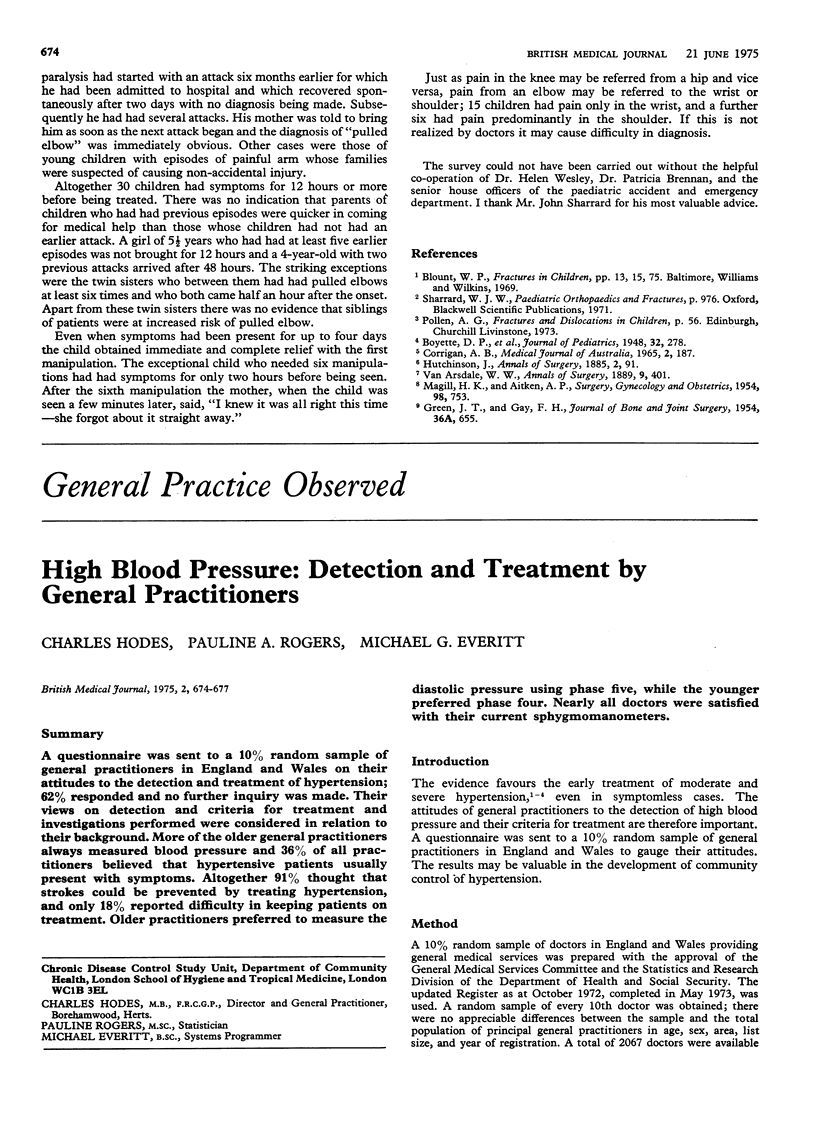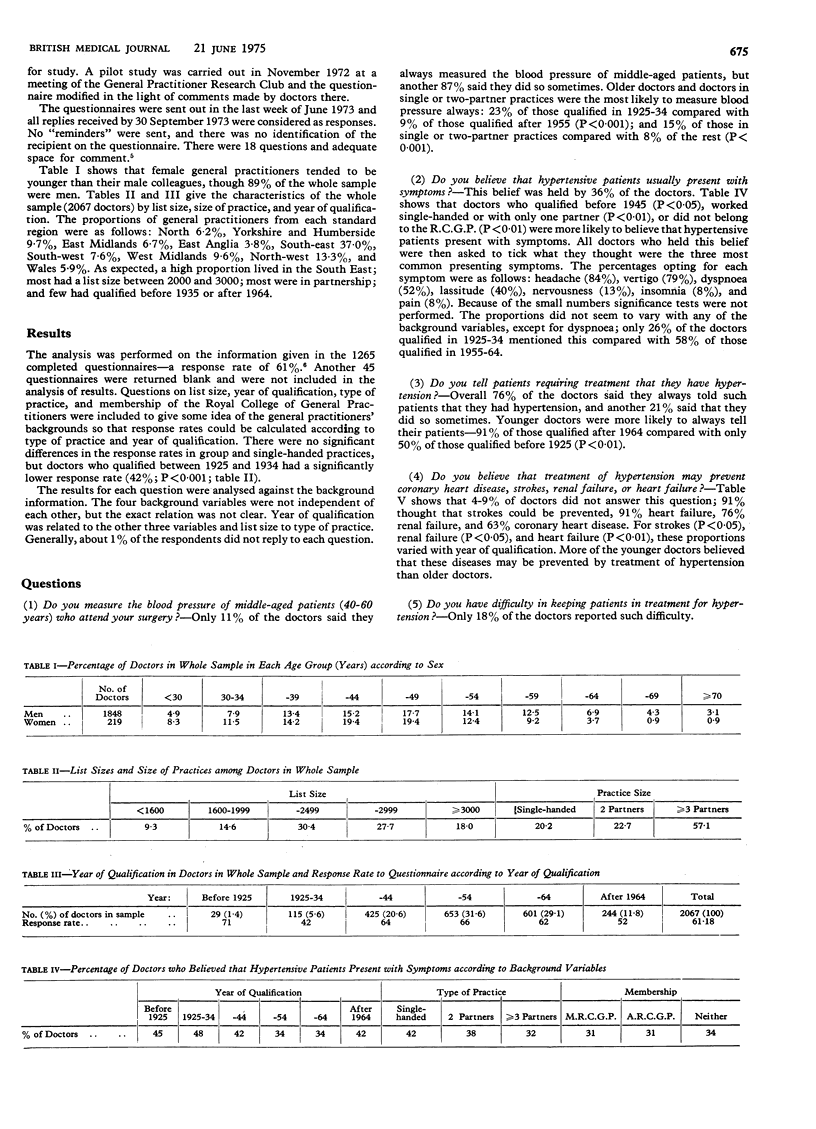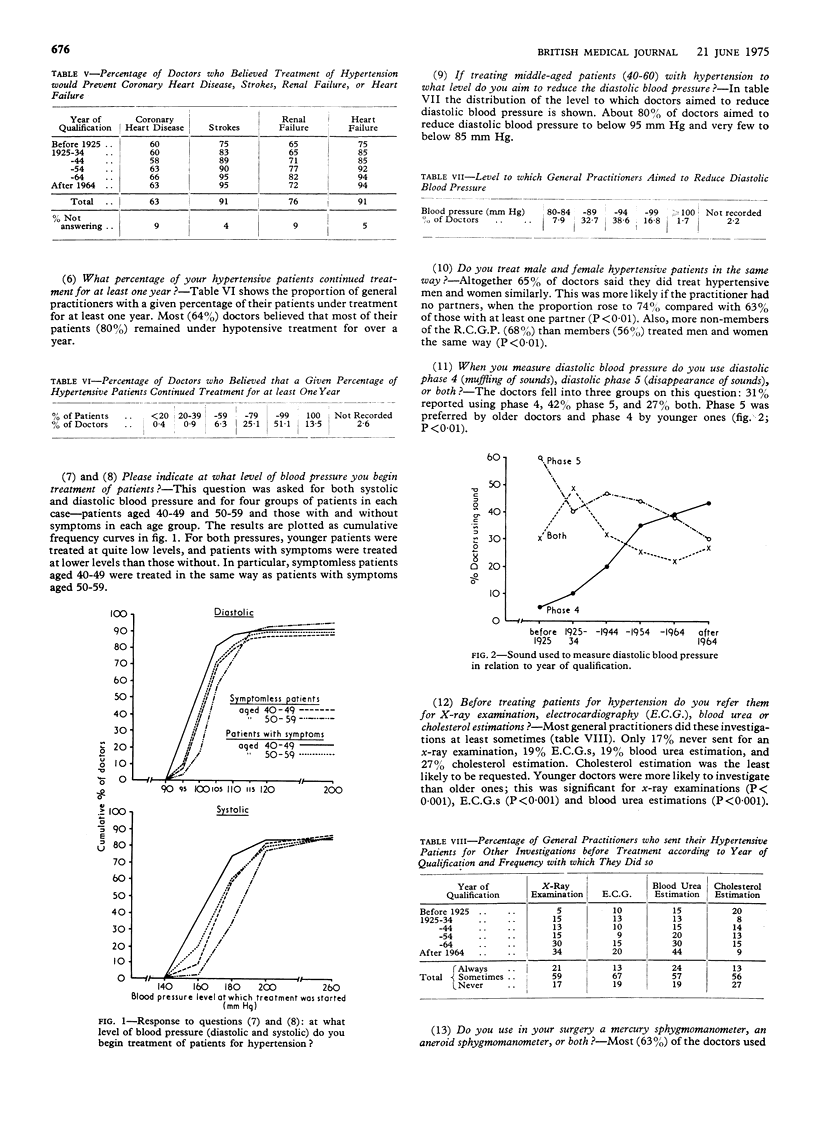Abstract
A questionnaire was sent to a 10% random sample of general practitioners in England and Wales on their attitudes to the detection and treatment of hypertension; 62% responded and no further inquiry was made. Their view on detection and criteria for treatment and investigations performed were considered in relation to their background. More of the older practitioners always measured blood pressure and 36% of all practitioners believed that hypertensive patients usually present with symptoms. Altogether 91% thought that strokes could be prevented by treating hypertension, and only 18% reported difficulty in keeping patients on treatment. Older practitioners preferred to measure the distolic pressure using phase five, while the younger preferred phase four. Nearly all doctors were satisfied with their current sphygmomanometers.
Full text
PDF



Selected References
These references are in PubMed. This may not be the complete list of references from this article.
- Effects of treatment on morbidity in hypertension. II. Results in patients with diastolic blood pressure averaging 90 through 114 mm Hg. JAMA. 1970 Aug 17;213(7):1143–1152. [PubMed] [Google Scholar]


